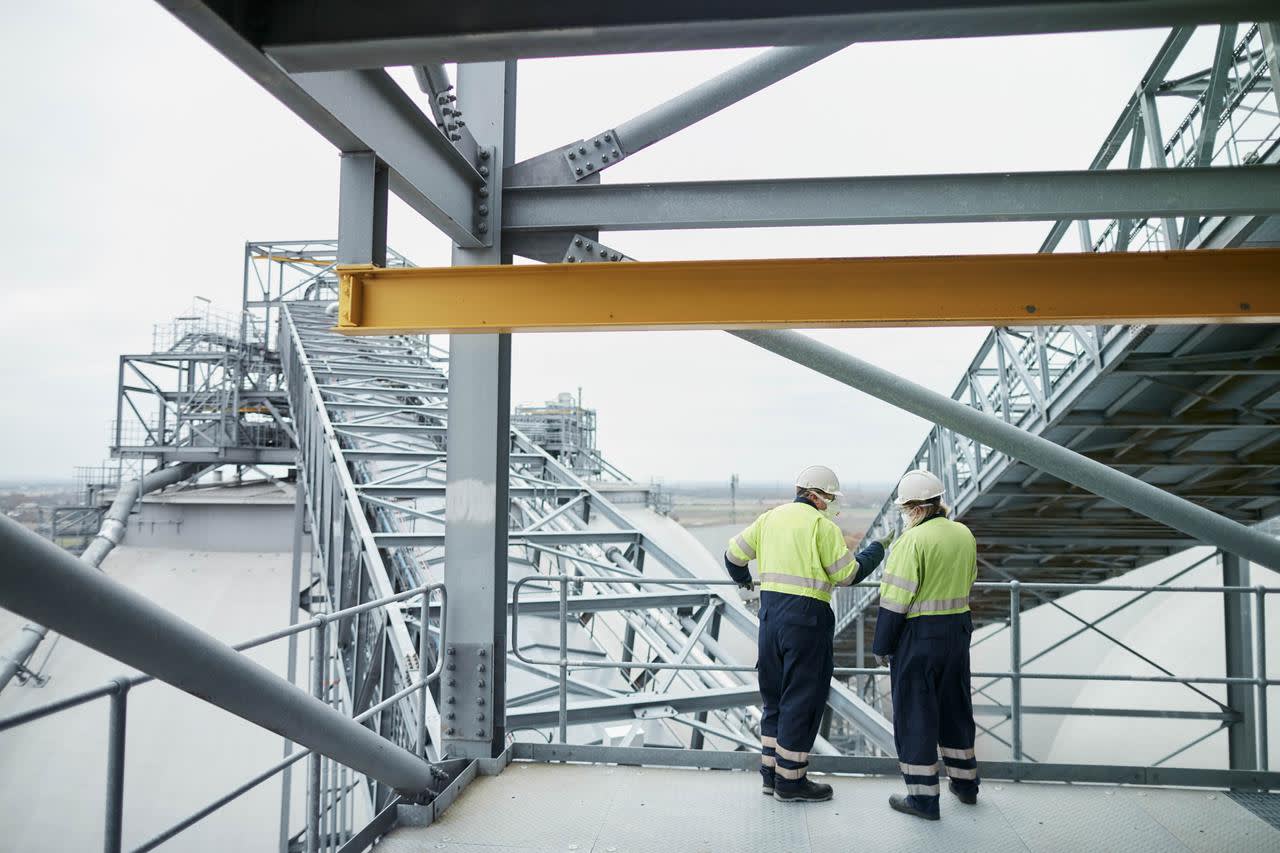How does bioenergy play a role in reaching net zero?
The UK’s plans to achieve net zero by 2050 requires the electrification of heating and transport systems, meaning a significant increase in demand for electricity. Over 80% of this could be met by intermittent renewable and low-carbon energy sources such as wind, solar and nuclear.

But to ensure security of supply and to limit the cost to the consumer, the remaining 20% of power sources need to provide the dispatchable power and non-generation system support services the power system requires. This is where bioenergy comes in.
Last year, bioenergy made up over one quarter of our renewable source electricity mix. And as a very flexible energy source, it’s vital to the UK’s net zero journey.
What is bioenergy?
Bioenergy refers to electricity and gas that’s generated from organic matter, known as biomass. Biomass is generally low-grade wood, created as a by-product of the production and processing of higher-value, solid wood products like furniture. It can also include secondary residues, such as sawdust. Most bioenergy is produced by combusting biomass as a fuel to produce high-pressure steam, driving turbines that, in turn, generate electricity.
How is bioenergy renewable?
Sustainable biomass is renewable because of the closed carbon cycle created when trees grow and take CO2 from the atmosphere. Whether the wood is used for bioenergy or these trees naturally decompose, the same amount of CO2 is released into the atmosphere.

The cycle remains in balance because the working forests which supply the low-grade wood used for biomass are replanted and these growing trees absorb more carbon.
The CO2 released when biomass is used to generate power was already in the biosphere and therefore isn’t increasing the amount of carbon dioxide. This is different to the emissions from fossil fuels, which release CO2 into the atmosphere that had previously been locked away underground for millions of years. That’s why fossil fuels contribute to climate change and sustainable biomass does not.
Climate, Nature and People Positive
At Drax, we believe the right biomass requires careful and robust governance and traceability. The right biomass can only be so if it meets the criteria as set out by leading international scientists and policy makers and, we believe, delivers climate, nature and people-positive outcomes – outcomes which are evidence-based and transparent. This regulation and vision keeps biomass suppliers and end users in tight parameters for what can and cannot constitute sustainable biomass. Our Forestry Commitments explain this in more detail. We make sure our biomass:
- Reduces net carbon dioxide emissions
- Protects the natural environment
- Supports people and communities
At Drax, we have a rigorous due diligence progress designed to ensure the biomass we source is the right biomass – sustainable and compliant with relevant legislation.
Why bioenergy?
So, we know how to ensure only the right biomass is used to generate renewable power, but why are we investing in bioenergy when other sustainable and renewable sources – such as wind, solar and hydro power – exist?
There are three driving reasons why bioenergy is so critical: energy security, tackling climate change and going beyond net zero:
Energy security
The UK needs energy security to protect it from volatility in global markets and geopolitical threats. Sustainable biomass is a vital renewable energy technology that can support UK energy security, reduce costs and emissions. It already delivers up to 17% of the UK's renewable electricity when the system is tight.
Sustainable biomass not only plugs the gaps when the wind doesn’t blow and the sun doesn’t shine, but its reliable, renewable power also delivers the system support services required to maintain a stable electricity grid.
Drax Power Station in North Yorkshire plays a critical role in the UK energy system, generating enough renewable electricity for up to four million UK homes using sustainable biomass sourced from its large and diversified supply chain. It’s the biggest single site renewable generator in the UK.
Tackling climate change
The world’s leading climate scientists at the UN’s Intergovernmental Panel on Climate Change have said, when done well, sustainable biomass is critical to tackling climate change.
When sustainably sourced, woody biomass can accelerate the decarbonisation of the energy system – as it has done in the UK – through the transition off fossil fuels while supporting healthy forests and the communities around them.
Going beyond net zero
Biomass is also an enabler of negative emissions with carbon capture and storage. Bioenergy with carbon capture and storage (BECCS) will permanently remove millions of tonnes of CO2 from the atmosphere, whilst delivering reliable, renewable power. No other technology can do both.
BECCS will not only make a significant contribution towards the UK’s net zero target, it’ll also save the country around £13bn in reaching this goal, whilst creating and supporting tens of thousands of jobs.
The deploying of BECCS would put the UK in pole position to export a cutting-edge technology to other countries, demonstrating global leadership in support of the world’s efforts to tackle the climate crisis.
Bioenergy and our future
Fossil fuels must be phased out and replaced with sustainable, renewable alternatives. Technologies like bioenergy are crucial in balancing and stabilising the UK electricity grid and allowing for more intermittent renewables such as wind and solar to come online.
You can learn more about biomass in our biomass FAQ.
Read our biomass FAQ